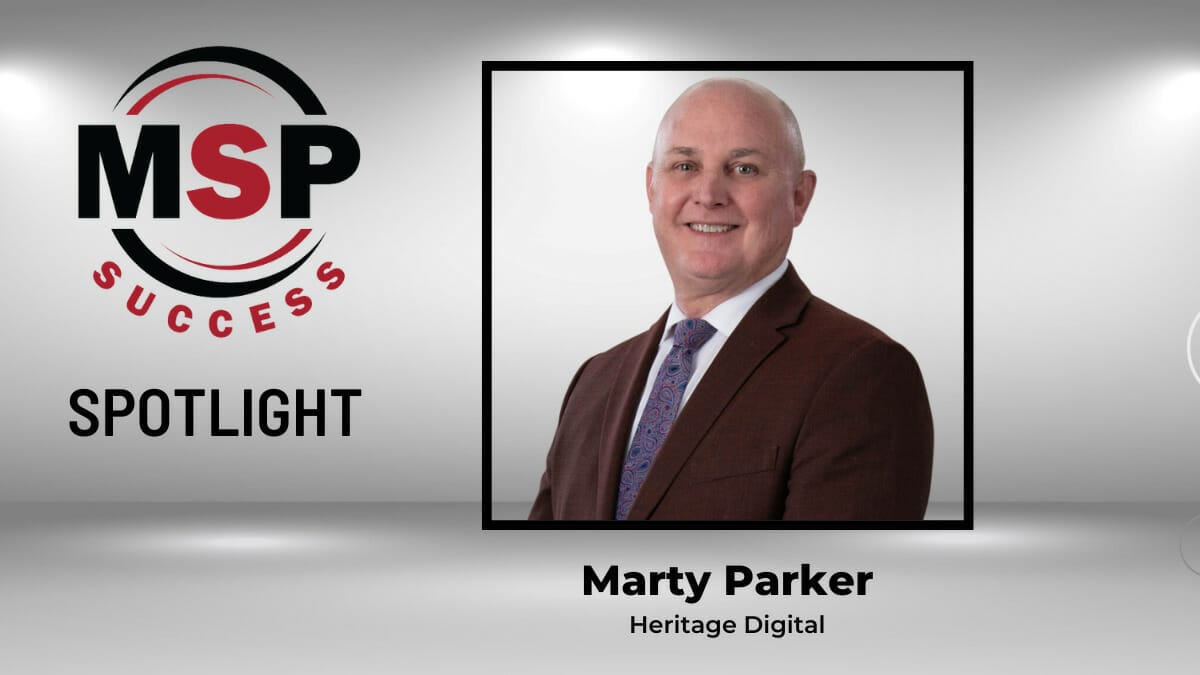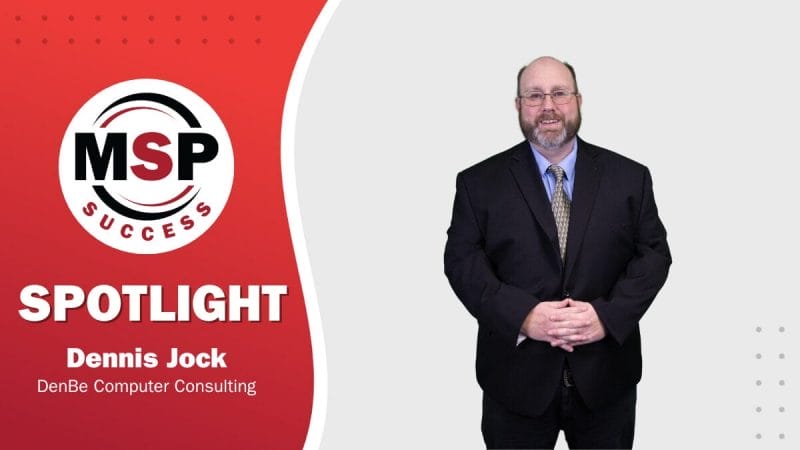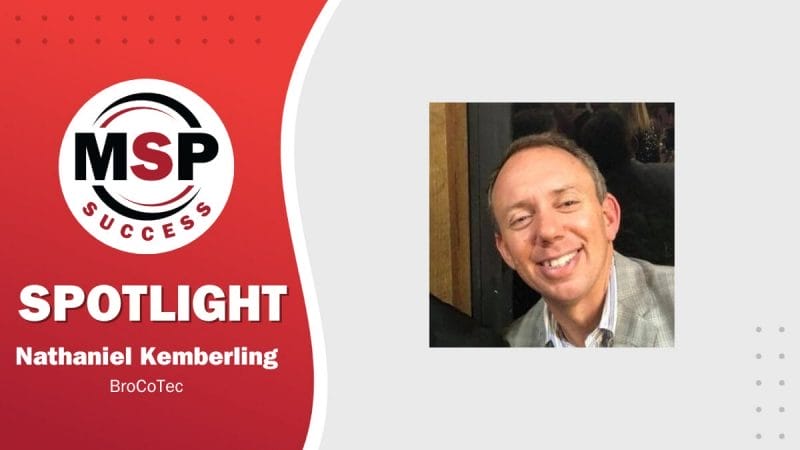Marty Parker had not planned to face a proverbial firing squad that day. When he walked into the large boardroom, he expected his primary role would be to hear the executives’ thoughts; perhaps ask a few questions. Instead of being seated in a chair in the back of the room, he was ushered by one of the executives to a podium at the front. As he approached, twenty pairs of eyes gazed at him expectantly. Parker remembers an intense, nervous heat rising through his body, “It felt like they were going to start throwing rocks at me right and left.”
A few weeks earlier, Parker had sent an email to the vice president of the national hospital network that oversaw five South Carolina hospitals and more than 40 smaller physician practices where Parker was the Chief Information Officer (CIO). The vice president was elevated up the chain of command of the hospital network, something like Parker’s boss’s boss’s boss. It was an audacious move, but Parker was frustrated with the network’s corporate structure. As CIO, Parker’s job was to keep his hospital and physician practices operating at peak performance and to protect their confidential patient information. The corporate structure impeded his ability to do that in a timely and cost-effective way. Whether pushing out an antivirus update or ordering new PCs, Parker was required to get approval first from corporate. This meant the timeline to push solutions and equipment out at his level took weeks instead of days and was significantly more expensive. The system also prioritized the needs of the more profitable hospitals over smaller physician practices, so those offices often went without updated equipment or responsive IT support. “Under the hospital’s control, the needs of the practices were viewed as secondary to the overall hospital structure I was managing.” The system was not serving needs equally. Parker sent the email outlining his grievances. “To directly challenge the vice president of an organization that size was crazy,” he laughs, remembering his boldness at the time. Instead of asking for more permission, Parker knew it was time for a new approach. “I decided to ask forgiveness after balking at what they were forcing us to do.” The next day, his phone rang.
“It was the vice president,” Parker says. “He said, ‘Talk to me.’” They talked for thirty minutes; the call ended with an invitation to fly to corporate the following week. “He said, ‘I want you here with my team next week,'” and I thought, ‘Oh no, I’ve overstepped my bounds.’” But it was too late for regret. One week later, Parker was at the front of a boardroom full of executives. The podium served as little protection against the ammunition he feared was about to strike him as Parker faced their hungry gaze. “I was stepping on all their toes when I sent the email,” he says. Parker was skipping major corporate protocols by sending his email straight to the vice president. He was also making an unprecedented request of the company; he wanted the executives to give up their power over the CIO’s decision-making process. “But it was wrong the way the system was set up,” Parker explains. For him to do his job as CIO effectively and protect the needs of all hospitals and practices he oversaw, the system had to change.
The executives did start firing at Parker, but they were not firing insults. Instead, they began firing off questions— a lot of them, and it took Parker by surprise. “They started asking me very pointed questions, but they came with open ears, too. They wanted to hear what I had to say, and they wanted my honest opinion. Believe me, I gave it to them,” Parker laughs.
He explained to the group of executives that the IT procurement approval process should happen at the level of the CIO. The trick, however, was explaining it to them in a language they would understand. “I had to talk to them on a business level, not a technical level,” he says. “It was something I had to learn coming from a technical background, to communicate from a business standpoint.”
Parker’s conversation sparked a change in the system. As a result of his email and the subsequent meeting, CIOs for hospitals across the nation were finally able to acquire exactly what they needed to support their hospitals, including smaller physician practices. “Needless to say, it was an interesting and memorable moment in my career, and amazingly, I didn’t get fired,” Parker jokes.
When Parker woke up that morning, he may have feared termination by corporate leadership. However, by the end of his conversation with the group of executives, Parker left feeling like an equal. He realized that despite their titles and positions of power, they knew very little about the technical work on which they depended. Parker, however, had 26 years of experience as a network manager in manufacturing and as CIO for corporate hospital institutions. “That was my first experience of entering an environment where I had to stand my ground, but I didn’t view myself as being less than these guys. I suddenly felt I was equal to them,” he says. In that nerve-wracking moment, Parker had a powerful realization. “In some ways, I was even above them in terms of the technical knowledge I had because they had risen to such a point in their corporate roles that they had lost the daily perspective of managing an IT network. That’s why I was there— to educate them on real-time issues.”
When Parker flew back home to South Carolina, he had helped initiate a significant change throughout the hospital network; the system was working smoother than ever. He was excited about using his experience to influence positive change. Then, he had thought to himself, “Where do I go from here?”
“I had basically reached the peak of where I was going to go in that organization,” he says. After 8 years as CIO for corporate hospital networks, he had no aspirations to move to a new city or up the chain of command, where he would be even further away from the needs of the hospitals and staff he supported. Still, he felt his experience had more potential than ‘directing traffic’ within the hospitals. Then, a new and unexpected opportunity presented itself.
Parker often worked with a break-fix IT company, Heritage Digital (HD), on hospital projects, and he became well acquainted with the owner. “What I didn’t realize was that he was looking for someone to buy the business,” he recalls. “He was fishing for my likes and dislikes and how I was doing things.” HD’s owner had a vested interest in finding someone who would help the company grow and succeed after he retired. Seeing the excellence with which Parker managed his team and work, he asked if he would be interested in buying the company and bringing his executive-level expertise to Florence’s small and midsize businesses (SMBs).
“In our city, around 2013, that level of IT knowledge was not accessible by the small business community,” Parker explains. “No one was offering them that service; they were never educated on their risks, so they were just living on a hope and a prayer.” Parker thought about the small physician practices like the ones he supported within the hospital network and how small budgets and shifting priorities challenged their security and productivity. As an IT provider, Parker could give them more than hope and prayer— he would provide them with confidence and reliable IT at an affordable price. He would make them priority number one. Parker bought the company and immediately converted it to a managed service provider (MSP).
Today, Parker says most clients understand the value of an MSP to their IT budget, because he spends time informing them of their risks and the importance of risk mitigation. He strives to become a part of their team. As Owner and General Manager of HD, Parker’s most powerful asset he brings to clients continues to be his deep expertise. “Anyone can provide tools, but I’m bringing them my executive-level knowledge and experience,” he says. “I’m able to show them the risks they are bringing on themselves by not having backups, virus protection, managed detection and response, the lists go on. I view myself as coach of my team, while a member of our clients’ team. They depend on me to provide business-understanding of their IT risks.”
For Parker, standing up in front of the proverbial firing squad taught him the power of his experience— not title or position. He realized communicating important information about risk mitigation or building effective IT systems on an even playing field was critical to initiating effective change in any company, regardless of size. Today, his entire team at HD stands up for their clients against IT risks to ensure they are the first priority today and in the future.
For more information on Heritage Digital, visit www.heritagedigital.com









